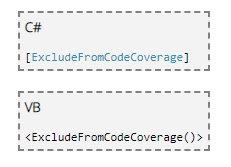Solution Coverage
As seen in the screenshot below, the Solution Coverage window consists of three columns:

Name – the project’s name.
Sequence Coverage – shows the percentage of lines of code covered by tests.
Branch Coverage – if/else statements create branches. Branch Coverage shows the percentage of branches that are covered by tests.
For example, the following method contains two branches:

Now, consider the following unit test:
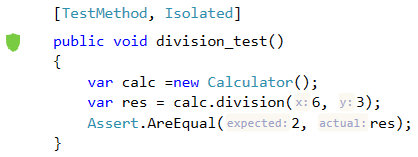
The coverage information for the above example is shown below:
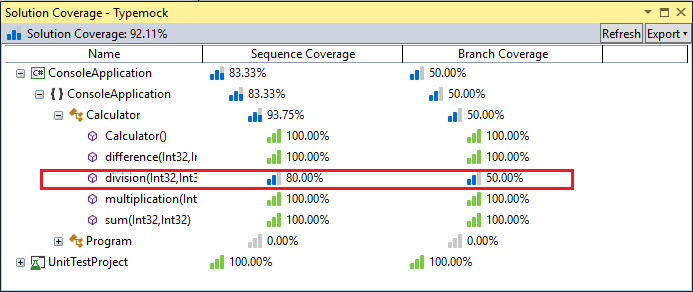
The unit test covers only one branch of the method “division,” namely the one with y different than 0. Therefore, Branch Coverage is only 50%.
The Sequence Coverage shows 80% since there are 5 lines of code under the method statement (curly braces included, “else” statement not included) out of which 4 are covered by the test (only the exception is not covered).
Codebase project/Test project/Solution coverage
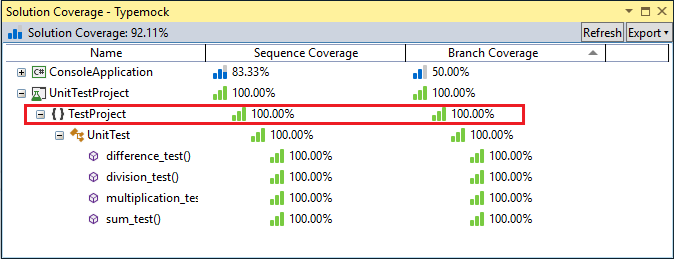
Codebase project coverage – shows the percentage of methods in your codebase project (named ConsoleApplication in the above example) being covered by unit tests.
Test project coverage– shows the percentage of unit tests in your test project (named TestProject in the above example) that were passed and not ignored (tests that are ignored are marked with the [Ignore] attribute).
Solution Coverage –shows the weighted average between the Test project coverage and the Codebase project coverage in the upper left corner of the window.
Test project example:
In the screenshot above there are only 4 tests which were all passed. Therefore, 100% is displayed in both the Sequence Coverage column and the Branch Coverage column next to the test project (named UnitTest).
Applying the [Ignore] attribute to one of the unit tests will cause the percentage displayed in the Sequence Coverage column to decrease to 75%:
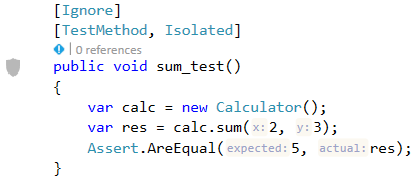
Coverage information
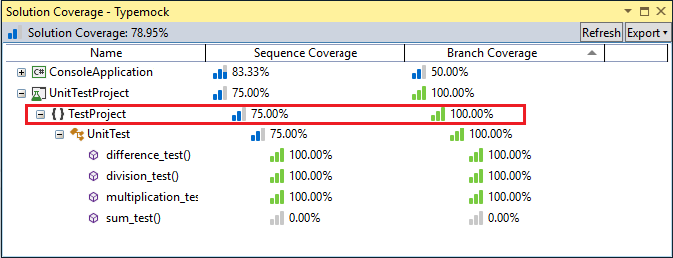
The same result would apply if this particular test was failed.
To exclude code from the solution coverage use ExcludeFromCodeCoverage attribute:
